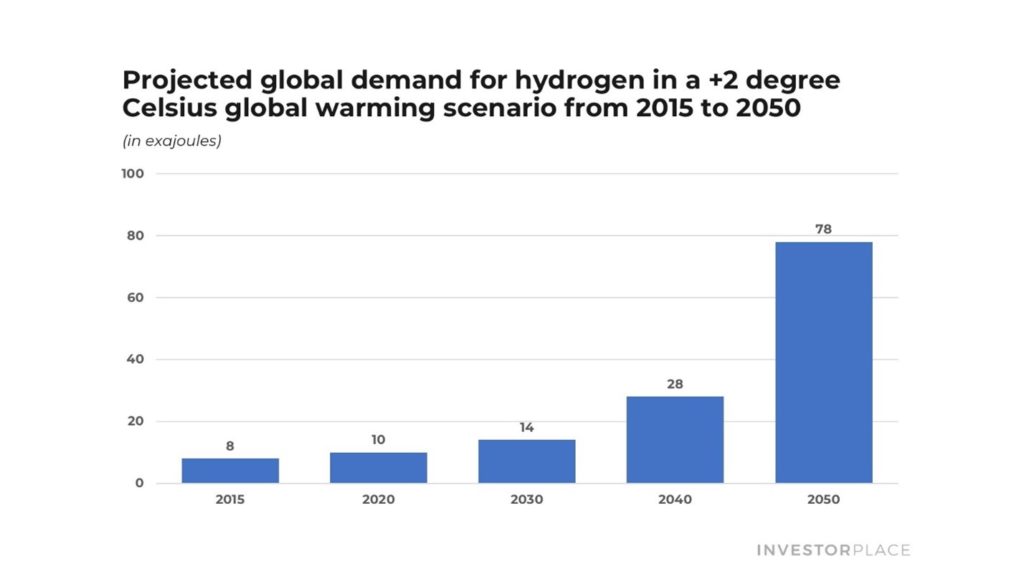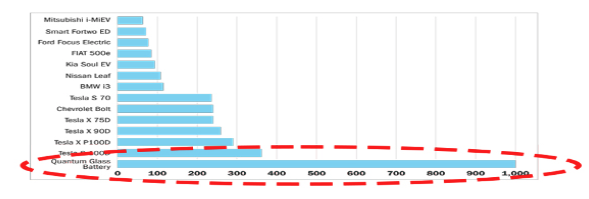Today, electric vehicles are all the hype.
They have morphed into the epicenter of the world’s shift to cut carbon emissions dramatically and rapidly, and sprint into a cleaner, greener, and more sustainable future.
But electric vehicles weren’t always at the epicenter of the Clean Energy Revolution…
Back in 2003, hydrogen was the talk of the town.
Then President U.S. George W. Bush said in his 2003 State of the Union address that “the first car driven by a child born today could be powered by hydrogen and pollution-free.”
He was half-right. There are a lot of pollution-free cars out there today. Many children born back in 2003 are driving them. But, for the most part, they are powered by electric batteries, not hydrogen fuel cells.
Where did hydrogen go wrong?
In the words of Matthew Blieske, Shell’s global hydrogen product manager: “… there was always something missing.”
In the early 2000s, hydrogen fuel cells were hyped up for their ability to reduce energy dependence, at a time when crude oil prices were north of $50 and rising. But, falling oil prices in the late 2000s/early 2010s sapped some of this hype, and dramatically slowed the Clean Energy Revolution.
Then, once the world started getting serious about decarbonization again in the back-half of the 2010s, hydrogen was but one of many zero-emission energy sources out there, alongside solar, wind, and electric batteries.
Relative to those other energy sources, hydrogen has proven to be less efficient and more expensive.
That’s because hydrogen – while the most abundant element in the universe – doesn’t exist in its pure form on Earth. So, producing hydrogen requires a complex, multi-step process, which results in significant electricity loss and requires tons of added infrastructure and dollars.
Not to mention, to offset these extra costs, most companies have turned to producing hydrogen from cheap natural gas – meaning most hydrogen isn’t zero-emissions at all anymore.
Net net, here we are in 2020, and hydrogen has gone from the epicenter of the Clean Energy Revolution to niche afterthought.
But that’s all about to change…
The Hydrogen Economy is on the cusp of an enormous tipping point.
For the first time in hydrogen’s long and choppy history, all the stars have aligned for the clean energy source to finally come into its own.
The global political stage is set for mass decarbonization over the next decade, as every country works towards a net-zero emissions target…
Economies of scale have led to the cost of hydrogen fuel cells dropping 60% over the past decade. Deloitte expects hydrogen fuel cell costs to drop below electric battery and combustion engine costs in just a few years…
Technological advancements and falling renewable energy costs have led to a new era of scalable “Green Hydrogen” production, wherein hydrogen is cost-effectively produced from renewable energy sources, like solar and wind…
In other words, all the drivers have finally shown up to the party at the same time.
In the words of Blieske: “[In the past] there was a policy missing, or the technology wasn’t quite ready, or people were not so serious about decarbonization. We don’t see those barriers anymore.”
With those barriers removed, the Hydrogen Economy will tip into its long overdue renaissance in the 2020s, creating what Morgan Stanley sees as an $11 TRILLION hydrogen market in the coming decades. Source: InvestorPlace
Source: InvestorPlace
Where will all this hypergrowth come from?
In high-usage and long-range energy and transportation markets, where hydrogen’s advantages over electric batteries shine brightest.
You see… battery electricity beats hydrogen when it comes to cost, efficiency, safety, and public roads infrastructure. To that extent, battery electricity will likely be the dominant clean energy source for passenger cars and last-mile delivery vans.
But hydrogen – thanks to its unmatched energy density as a result of being the lightest element in the universe – beats battery electricity when it comes to range, recharging times, and emissions. So, in heavy-usage and long-range situations, hydrogen is the better renewable energy source. To that extent, hydrogen fuel cells will likely be the dominant clean energy source for industry, cross-country haul, and stationary.
Think forklifts in warehouses… trucks that have to travel across the country, and ships that have to travel across oceans… data-centers that have to be “always on.”
Hydrogen fuel cells are on the cusp of disrupting those industries over the next decade, much as electric batteries are on the cusp of disrupting passenger vehicles.
Who is at the forefront of this multi-trillion-dollar disruption?
Plug Power (NASDAQ:PLUG). The company started out by supplying hydrogen fuel cells for forklifts to warehouse operators like Walmart and Amazon. Now, Plug Power is morphing into an all-in-one, vertically-integrated Green Hydrogen powerhouse at the epicenter of the Hydrogen Economy.
Needless to say, Plug Power stock is a long-term winner.
But other names are also interesting in this hypergrowth space…
Like Ballard Power (NASDAQ:BLDP), who is making hydrogen fuel cells for buses, trucks, and trains. And Bloom Energy (NYSE:BE), who is creating energy “boxes” powered by green hydrogen to help replace grid power.
Between these three hypergrowth stocks, you have three of the highest-quality plays on the multi-trillion-dollar Hydrogen Revolution. You also have three stocks that could easily rise several hundred percent in the 2020s.
Hypergrowth investors should take a good hard look at these three emerging hydrogen stocks.
Read Next: Electric Cars Are Taking Over
A new type of battery is pushing everything we thought we knew about energy storage to the limits.
According to automotive insiders, consumers will soon be able to go 1,000 miles on a single charge.
Think about that for a moment…
That’s nearly TRIPLE the distance of the best-performing electric cars on the market right now — and more than 8 TIMES farther than the average electric car…
That means you could drive from New York City all the way down to Daytona Beach, Florida, without stopping!
A 1,000-mile range clobbers even the most fuel-efficient gas vehicles on the road today!
In short, this tech is about to change EVERYTHING.
When you see this live-action demo, you’ll understand why.
Here’s the best part:
At the heart of this new technology is one company — 1/1,000th the size of GM.
If you want to get in on the electric car revolution, this is easily the best way to do it.









